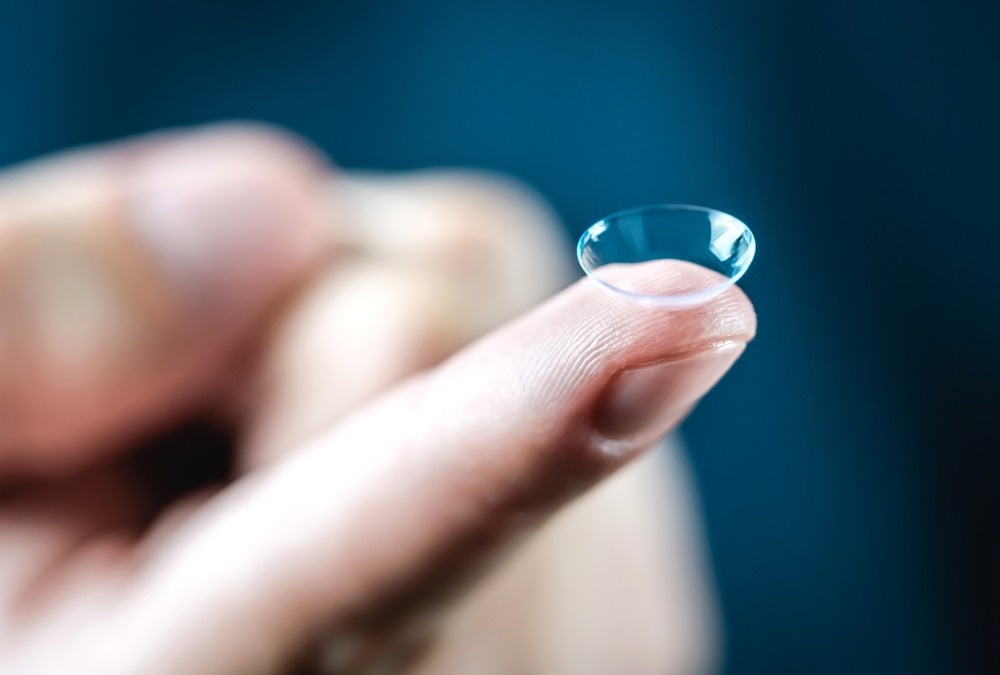Introduction
How to slow the progression of myopia
Orthokeratology, surgery, and myopia
References
Myopia (nearsightedness) is considered one of the three major visual refractive errors, with a significant increase in prevalence over the past few decades. The condition occurs when distant objects focus anteriorly to the retina. In contrast to hyperopia, which affects close vision, people with myopia can see close objects clearly, but cannot manage distant ones.
The primary goal for managing the patient with myopia is achieving clear and efficient binocular vision with good ocular health. Treatments currently used to slow the progression of myopia include spectacle lenses, contact lenses, and various pharmaceutical agents. Some patients are candidates for refractive surgery.

Image Credit: Edgar Daniel Yanchapaxi/Shutterstock.com
How to slow the progression of myopia
Optical correction in the form of spectacles or contact lenses is often prescribed to achieve clear distance vision. Which of the two will be chosen depends on factors such as patient age, compliance, motivation, corneal physiology, and financial considerations. Individuals with myopia have prescriptions with negative numbers, with a larger value representing more severe myopia.
Accommodative effort and retinal blur can be reduced by bifocal glasses, which change the focal point for near work. Studies published to date support the suggestion that bifocal lenses can inhibit myopia development in children, though only by a small amount and in a subset of children with particular ocular characteristics.
Contact lenses have been shown to increase peripheral vision, promote outdoor activity, and provide cosmetic benefits. The potential mechanisms of action of rigid contact lenses include transient flattening of the cornea and improved retinal image quality with reduced peripheral blurring.
Recent well-designed studies with topical atropine (a non-selective muscarinic antagonist) have demonstrated clinically significant reductions in myopia progression. Pirenzepine is also a muscarinic antagonist, but this drug is less likely to produce anti-accommodative effects (namely mydriasis and cycloplegia) compared to atropine.
Orthokeratology, surgery, and myopia
Orthokeratology represents the programmed fitting of a series of contact lenses (often over weeks and months) to flatten the cornea and reduce myopia. Modern orthokeratology procedures use reverse-geometry gas-permeable lenses and are quite effective for temporarily reducing low to moderate myopia.
An overnight lens-wearing protocol (also known as overnight orthokeratology) provides an alternative to refractive surgery for many affected individuals. The onset of the refractive effect is expeditious, changes can be observable within minutes, and the result is stable 7 to 10 days after treatment. Furthermore, the procedure appears to be completely reversible on cessation of lens wear.
Since medical usage of the excimer laser was approved in 1995 to reshape the cornea, significant developments in the correction of myopia have been achieved. The excimer laser is employed to perform photorefractive keratectomy (PRK) and laser-assisted in situ keratomileusis (LASIK), which both change the cornea's shape. The laser flattens the central cornea in myopic patients to decrease its focusing power.
Cryolathe keratomileusis and automated lamellar keratoplasty (ALK) can be used for severe myopia. Cryolathe keratomileusis involves freezing a section of corneal stroma and reshaping it on a lathe to a minus power. In ALK, an automated microkeratome moves across the cornea while the corneal cap is hinged and not sutured in place.
The best candidates for such surgical interventions are patients highly motivated to achieve improved unaided visual acuity with decreased reliance on spectacles or contact lenses. It must be noted that patients undergoing myopia progression should not have refractive surgery, and the procedure should not be done before physical maturity.

Image Credit: Tero Vesalainen/Shutterstock.com
Continue Reading about myopia here!
References:
- Gwiazda J. Treatment options for myopia. Optom Vis Sci. 2009 Jun;86(6):624-8. doi: 10.1097/OPX.0b013e3181a6a225. Erratum in: Optom Vis Sci. 2009 Jul;86(7):915. PMID: 19390466; PMCID: PMC2729053.
- Saw SM, Gazzard G, Au Eong KG, Tan DT. Myopia: attempts to arrest progression. Br J Ophthalmol. 2002 Nov;86(11):1306-11. doi: 10.1136/bjo.86.11.1306. PMID: 12386095; PMCID: PMC1771373.
- Fredrick DR. Myopia. BMJ. 2002 May 18;324(7347):1195-9. doi: 10.1136/bmj.324.7347.1195. PMID: 12016188; PMCID: PMC1123161.
- Aller, T. Clinical management of progressive myopia. Eye 28, 147–153 (2014). https://doi.org/10.1038/eye.2013.259
- medschool.cuanschutz.edu. (n.d.). Department of Ophthalmology. [online] Available at: https://medschool.cuanschutz.edu/ophthalmology [Accessed 25 Jul. 2022].
Further Reading